Antarctica
December 19, 2021 to January 6, 2022
Mike and Judy Henderson
I'm going to leave this map at the front of the web page so you can visualize where we are.

+++++++++++++++++++++++++++++++++++++++++++++++++++++++
12/29/2021 (Wednesday) Portal Point, Antarctic Peninsula. Location at 06:15, 64˚23.5'S, 61˚47.5'W, 1˚C, seas calm, clear with bright sunshine.
We have an excursion to the mainland of the Antarctic Peninsula this morning. Our zodiac group was one of the last to be called, so we were able to take our time in the morning. We left about 10am. I did not take my camera - just my iPhone.
Here's where we're going. We were told that this would be a viewpoint only - no animals were expected because of the snow - but from the distance we could see some rare Silversea red-jacketed penguins on the hill.

A closer look at the landing point. The rocks were flat and sloping here, so we barely stepped into water as we left the zodiac.

Heading up onto the snow. The snow here was very easy to walk on - it was firm and not at all slippery. Much easier than the previous place we went that had lots of snow.
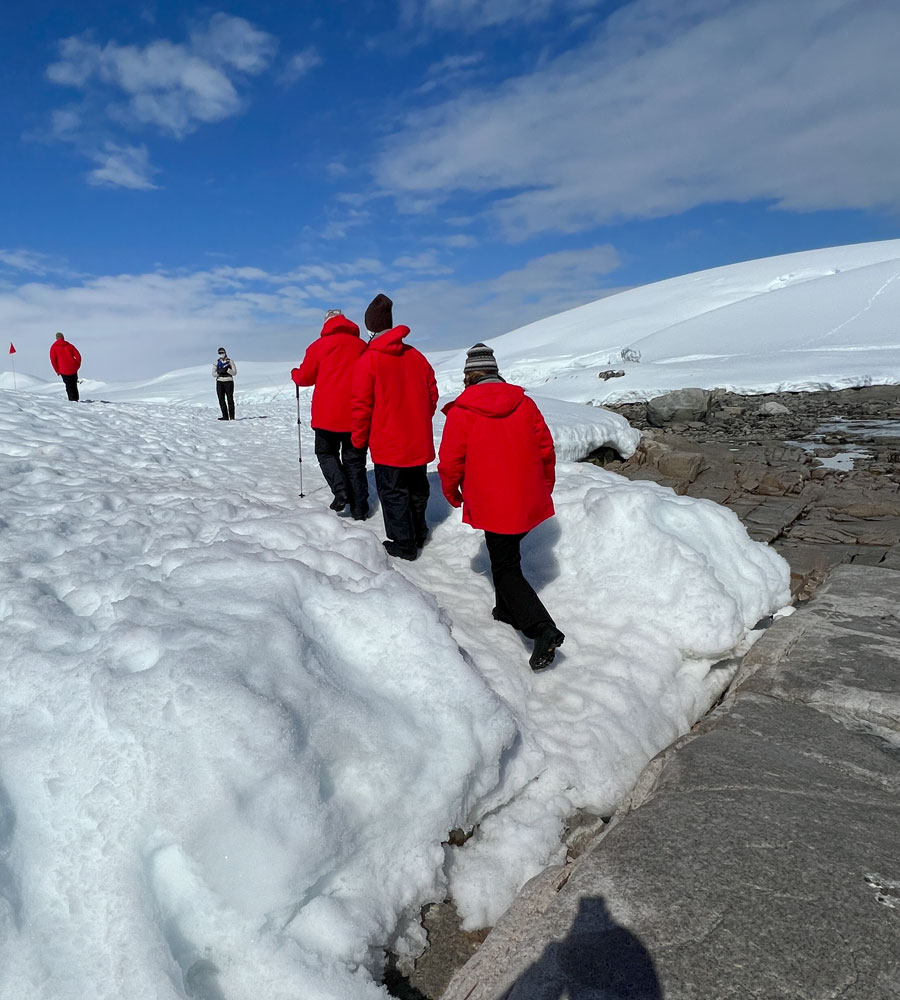
Judy and Janet at the top of the hill.
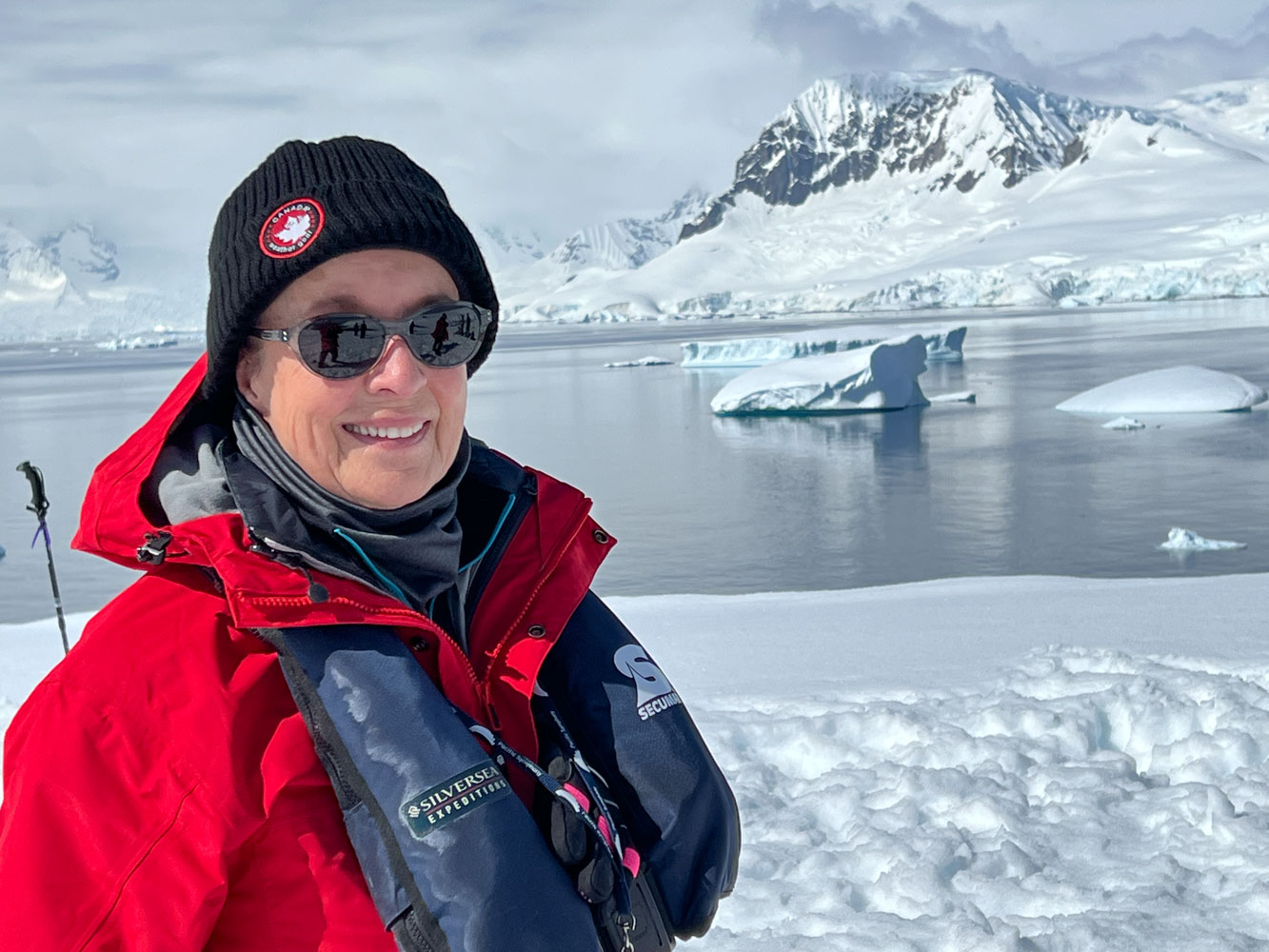
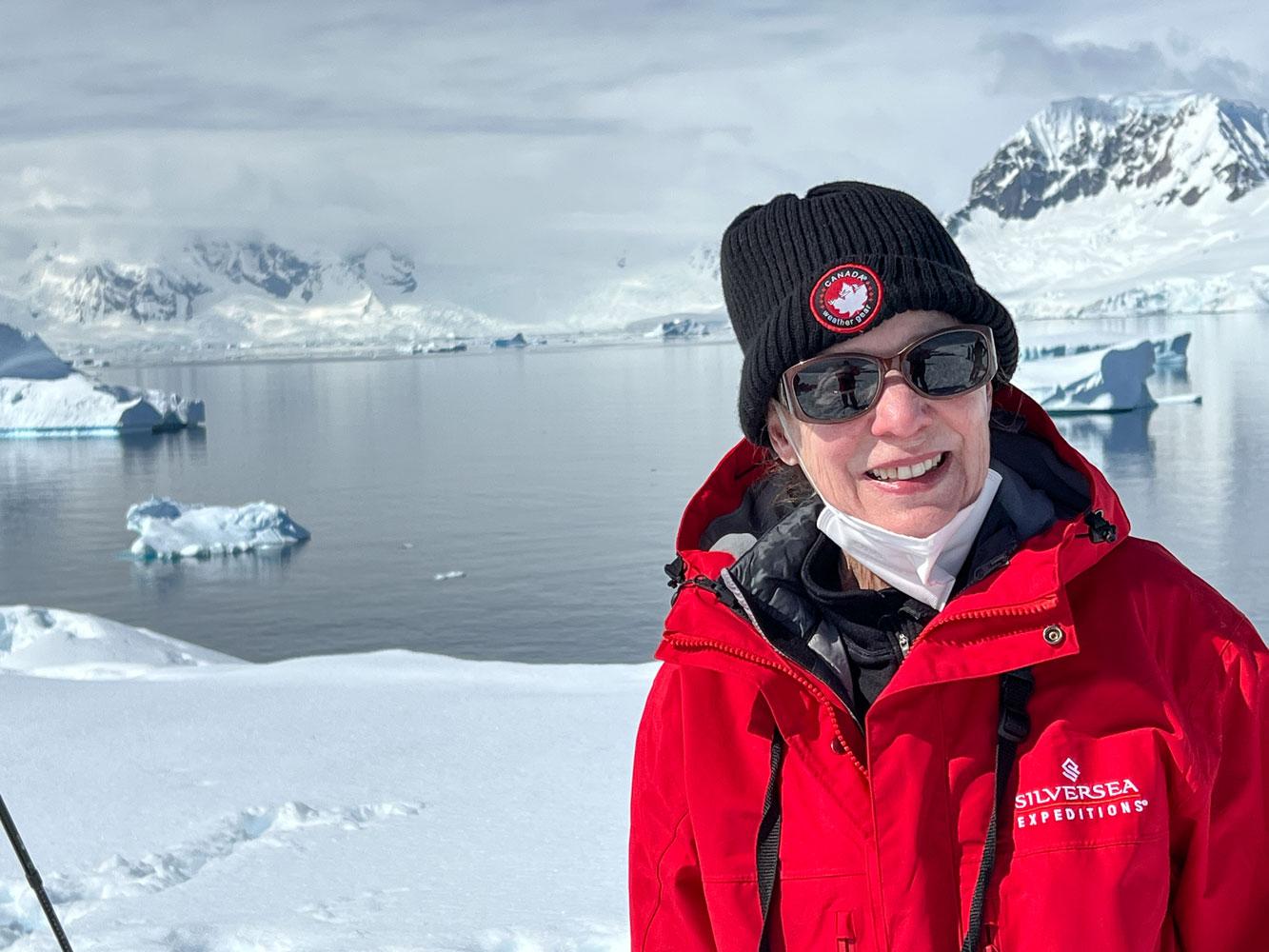
And me. It was warm on the hill. There was no wind and the sun was out. Judy took this picture of me as I was taking off the life preserver and my parka. I was very comfortable without the parka.
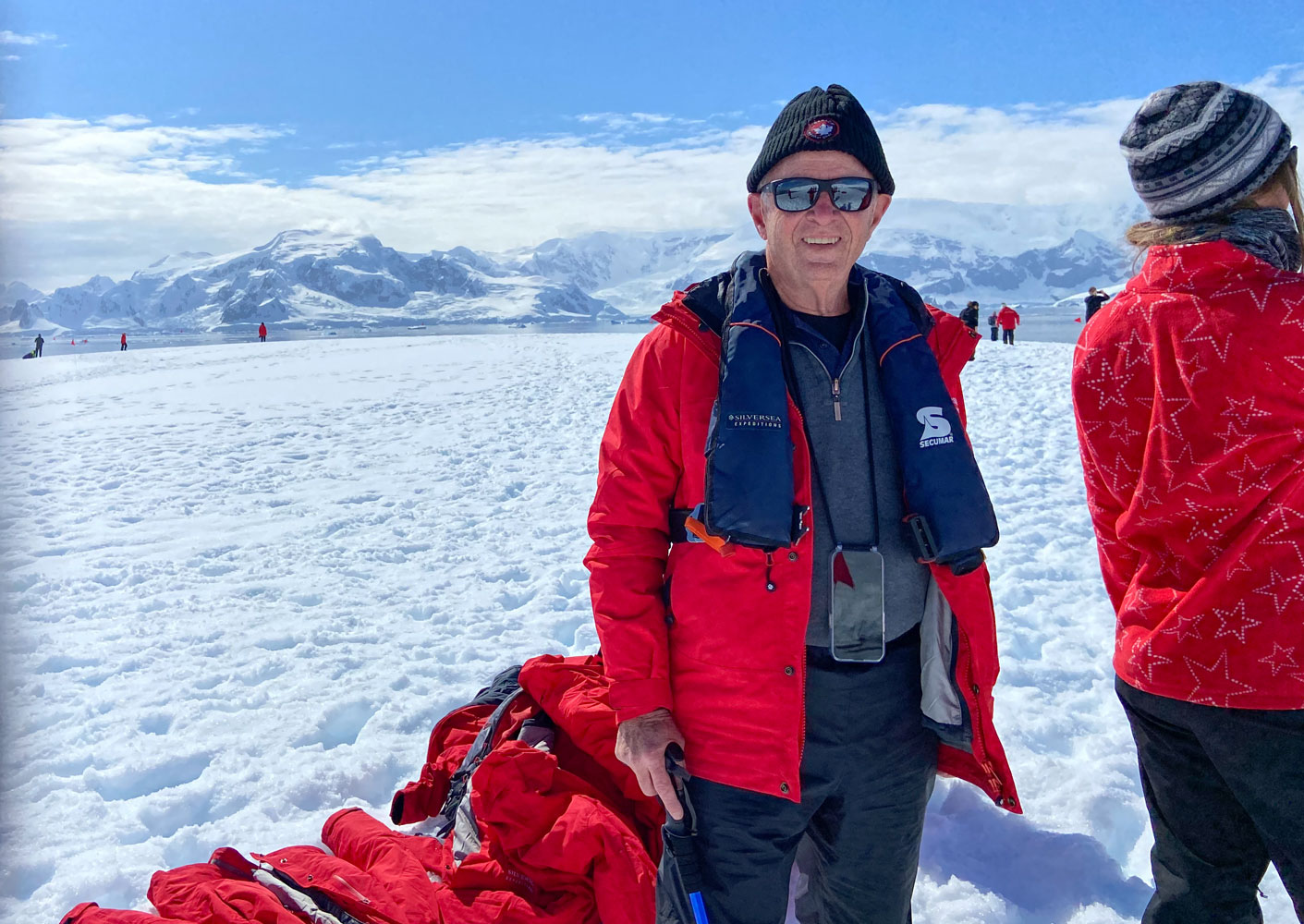
Some of the scenery from the hill.

Kayakers from the ship were nearby. The water there was perfectly flat, and they made beautiful bright spots on the seascape.
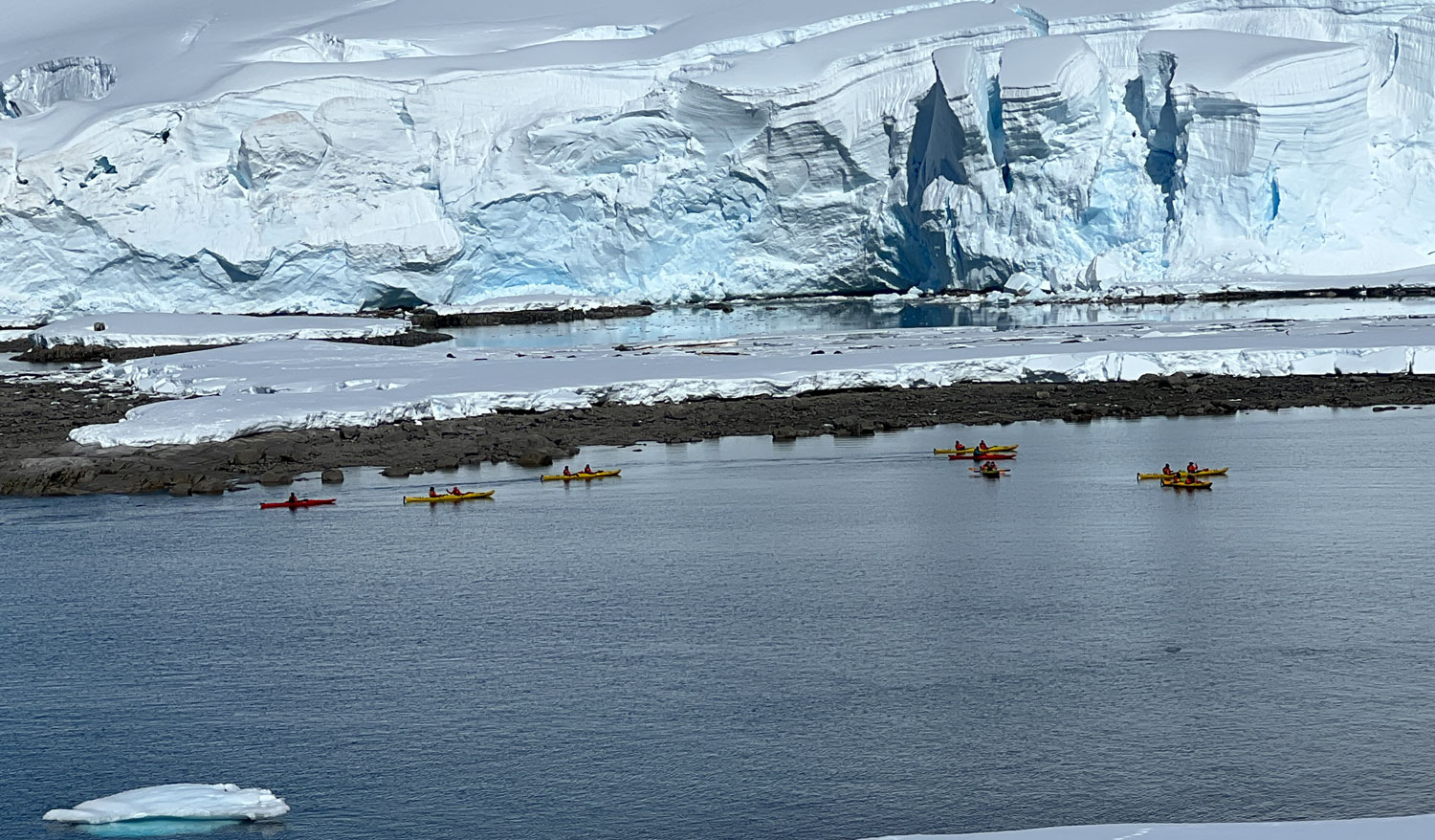
As we were climbing down toward the landing site, we encountered a group of Adélie Penguins. We were told that they were probably just resting on the hill.
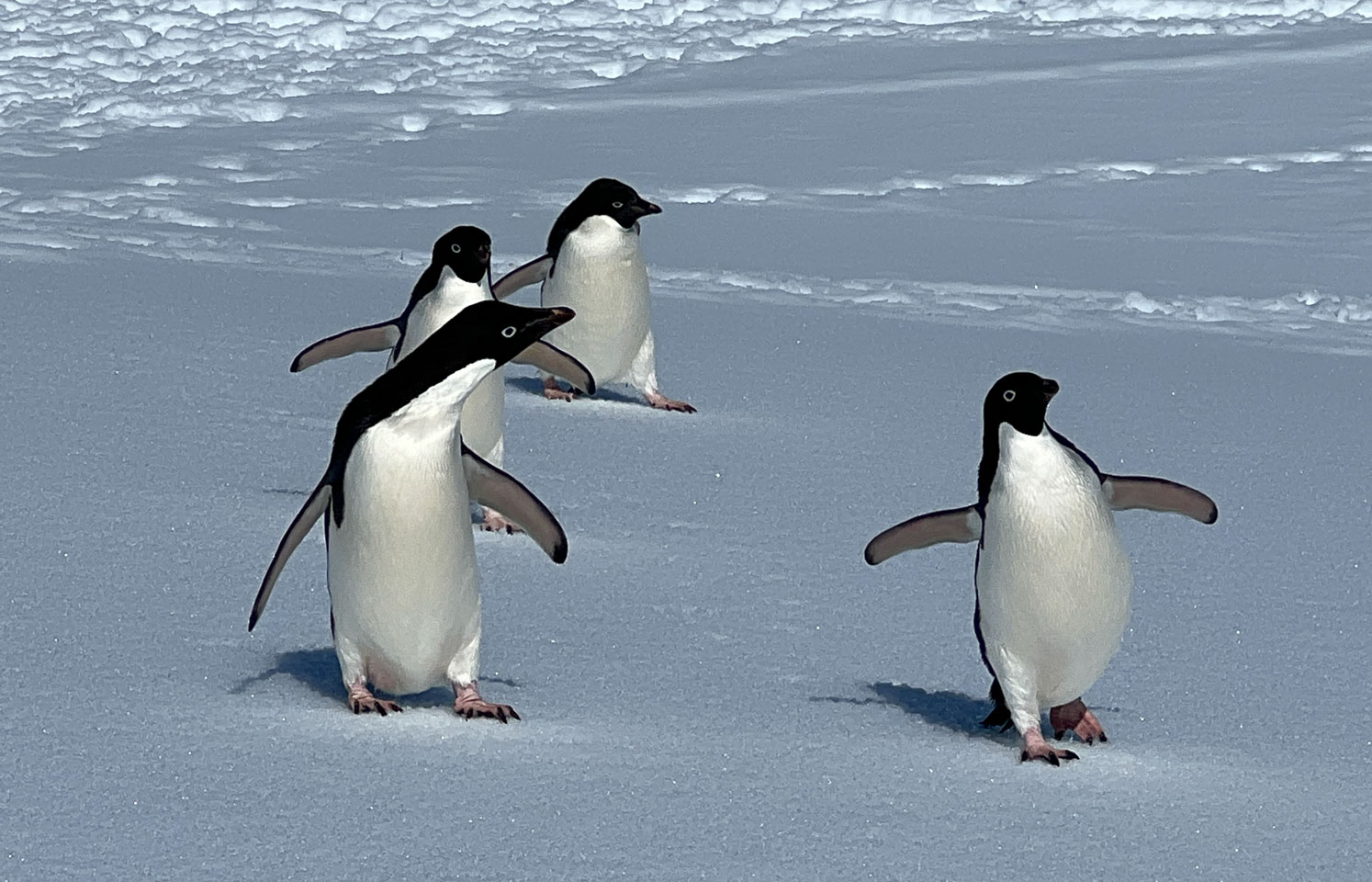
Here's a close up of one of them. Very cute, with curious personalities.
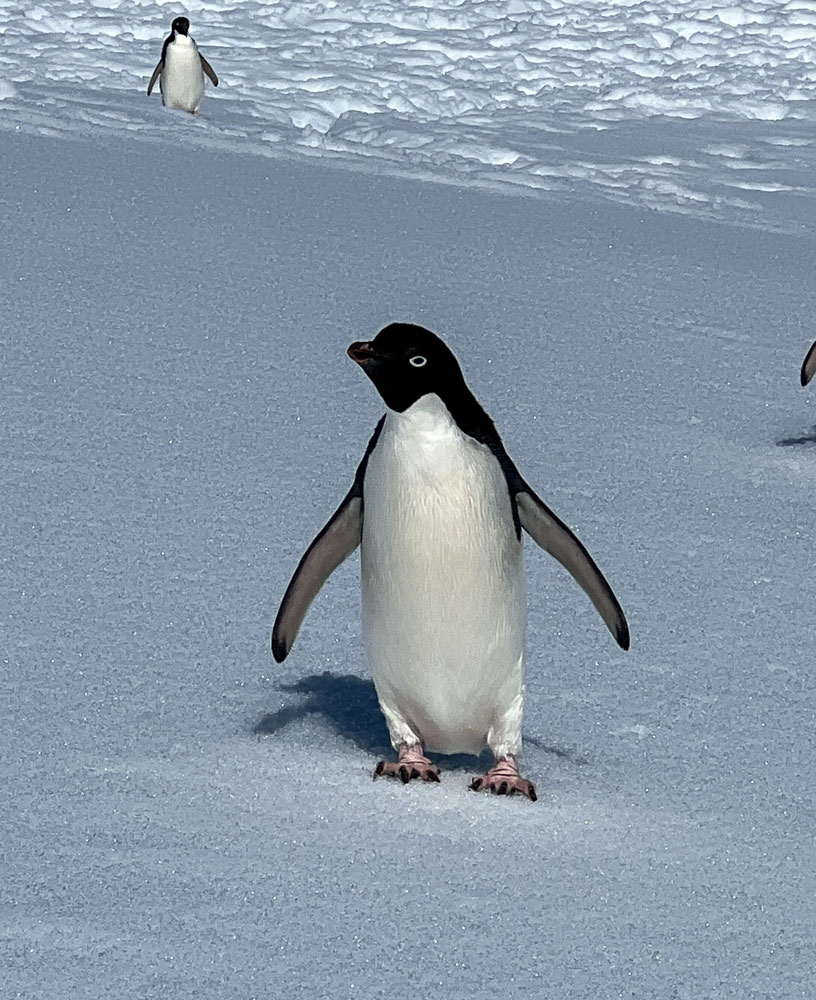
As we were heading back to the ship, we passed near the bow and I took this picture of the Silver Cloud.

After lunch, I went to the reception desk to ask if I could talk with the ship's IT person. About 3:30pm the IT officer came to our cabin and I was able to ask him some questions about how the Internet access worked on the ship. His name is Oleg Filatov. His work location on the ship is on the bridge.

The ship has two satellite transponders that communicate to geosynchronous satellites. Because a geosynchronous satellite orbits about 22,236 miles above surface of the earth, it takes a significant amount of time for the signal to go up to the satellite and then back down to the earth. Oleg estimated that the round trip time of a packet was about 650 to 700ms. That's the time for a packet to go up to the satellite and come back down (270ms), get processed (unknown amount of time), then the reply packet to go up to the satellite and come back down to the ship (270ms). The propagation delay is greater close to the poles than at the equator because the distance to the satellite is greater. At the equator, the delay would be 240ms for one up and down. This makes the Internet access much slower than at your home - there's a lot of delay between the time you send a packet and the time you get a response. At your home you likely have about 20ms of transmission delay instead of the 700ms on the ship.
The communications link is not that fast - Oleg told me that the maximum bit rate is about 16Mbps down and 6Mbps up. That's for the whole ship. Compare this to your access speed at home. I have 50Mbps down and 12Mbps up at my home.
There's a Wi-Fi access point in every cabin. There are many steel walls in the ship which limits the reach of an access point. Having an access point in each cabin guarantees good Wi-Fi access. There must be access points all over the ship in order to provide connectivity wherever you are - in the restaurant, in a hallway, on the deck, etc.
Connectivity in the ship is fiber between the major routers and standard gigabit Ethernet cable from a router to the access points.
One thing I was especially interested in was how they created the Premium Internet access (compared to Standard Internet access). From what I understand, they know the MAC address of devices that are registered for Premium access, and packets to and from those devices are transmitted first from a queue of packets (the IP address can change, but the MAC address is wired into the device). This means that someone with Standard access can get good performance if other people are not using the link. If you have Standard access and are willing to do your work in the middle of the night, I expect you'd get good performance. But during a busy time, your performance will be fairly poor. In order to maintain good performance for the Premium access I expect they have to limit how many cabins have Premium access.
I've noticed outages in the system and I asked about those. He said the most common reason for outages is that the ship is sailing in a direction that puts some of the superstructure between the satellite dish and the satellite. That blocks the signal and we lose Internet access. We talked a bit about antenna placement and he commented that on a small ship like the Silver Cloud there just aren't many places where they can put the dish to avoid that problem.
[A side note about geosynchronous satellite communications: If you were at the South Pole, the satellite would be below the horizon so you couldn't communicate to it. It turns out that communications to a geosynchronous satellite is unreliable below about 60˚ south and north latitude. At those locations, the signal has to go through a lot of the atmosphere and can be blocked by large terrain features. We've been lucky to get the generally good Internet service that we've had so far.]
++++++++++++++++++++++
We sailed into Wilhelmina Bay this afternoon. Wilhelmina Bay is known as a place where humpback whales congregate, so we hope to see a few.
When we got there we didn't see any whales, but there was quite a bit of sea ice, which the expedition leader said was very uncommon at this time of year. Here are a few pictures.
You can easily see the sea ice extending out from the land in this picture.
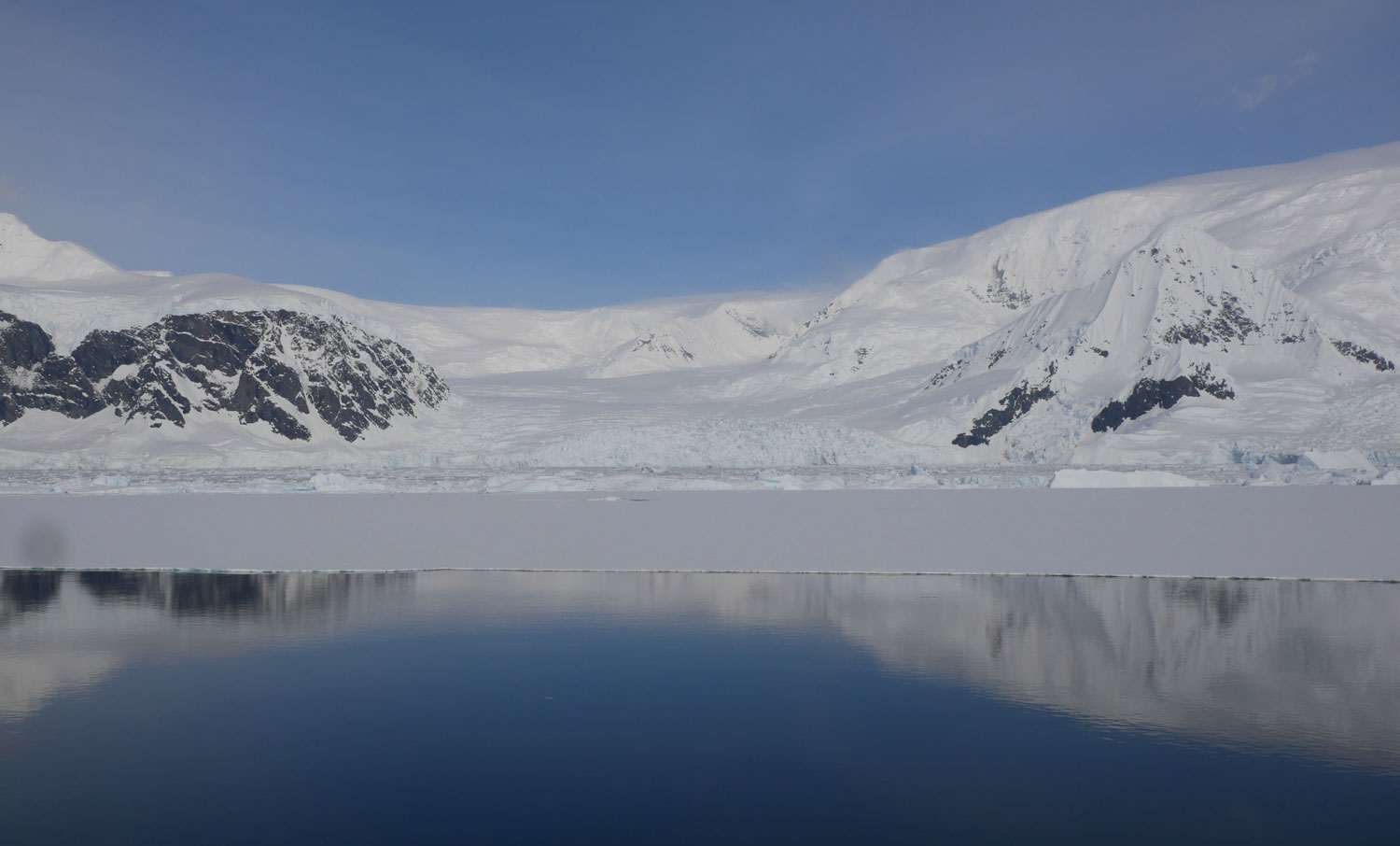
This is a closer view of the sea ice. There were a few penguins and a couple of seals resting on the ice, but the area is so vast that they are difficult to spot in a photo. The bumps in the sea ice are small icebergs that have been frozen in place by the flat ice. They are ice-bound icebergs.

A final picture of the bay.

That was the end of our day.
++++++++++++++++++++++++++++++++++++++++++++++++++++
12/30/2021 (Thursday) Half Moon Island, South Shetland Islands. Location at 6am, 62˚42'S, 59˚47'W, 0˚C, Moderate seas, snowing, wet and foggy. Doesn't look good for an excursion this morning. Actually, that wouldn't break our hearts. Neither Judy nor I have any appetite for going out in this kind of weather.
The bow was pitching up and down as we went into the waves. I went up to the pool deck early this morning, and the ship's pool was really splashing. Here's a short video of the sloshing in the pool. It's a salt water pool.
Here's a shot of a splash.
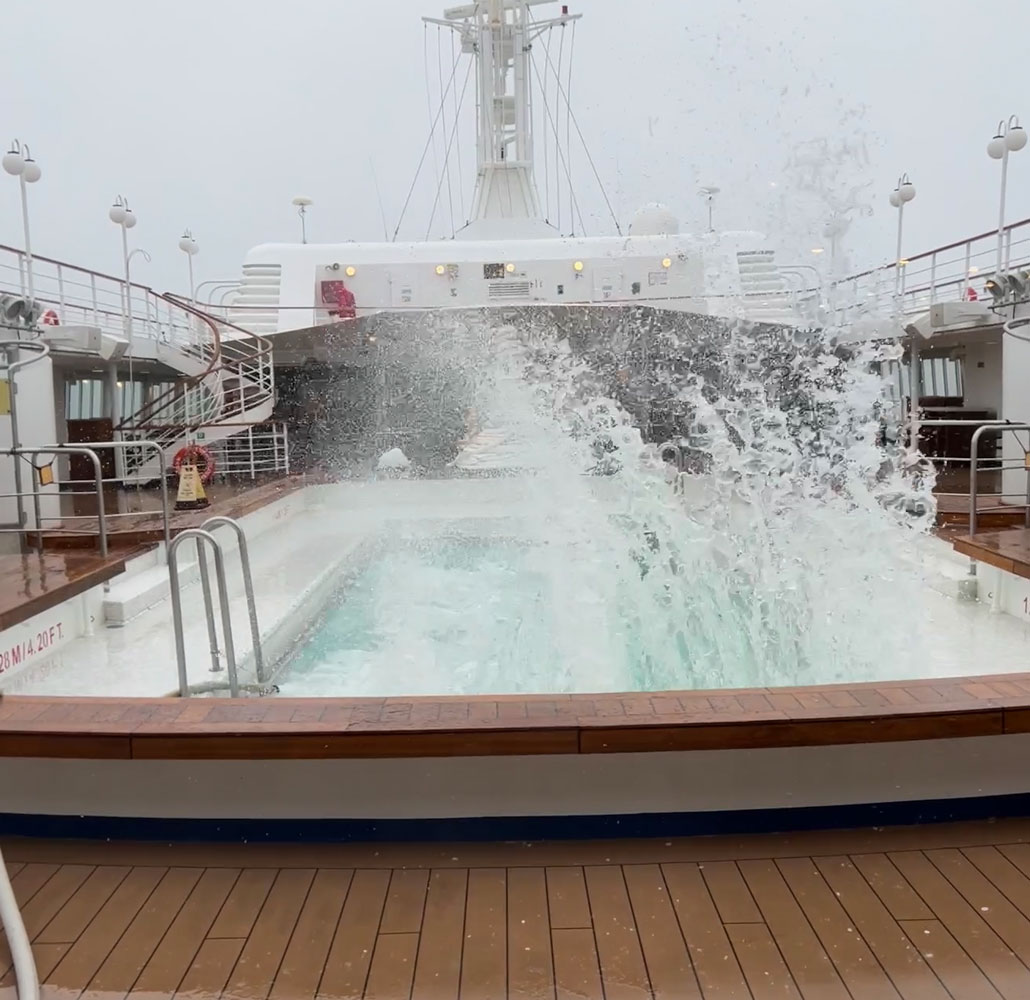
Excursions were cancelled this morning. We sailed to Fort Point to see if the weather was any better, but when we got there, it was too rough to land.
Instead, the expedition team offered two lectures. At 9am there was a lecture on the different kinds of seals, and at 11am a lecture on the Shackleton Expedition. The Shackleton lecture was especially appropriate because we are scheduled to visit Elephant Island tomorrow. Elephant Island is where the crew of the Shackleton Expedition spent four months waiting for rescue. It was an outstanding lecture given by an historian (Victoria) who made their story a dramatic highlight of our trip.
The ship proceeded to Discovery Bay at Greenwich Island where a "consolation" zodiac tour was organized. Discovery Bay is not that large and the ship is anchored more or less in the middle, so we can see the landscape fairly well from the top deck of the ship. Judy and I decided not to go on the zodiac tour but to take some pictures from the ship. Janet decided to go. She later reported, "You didn't miss much." There wasn't much to see and there was spray coming into the zodiac. She and her camera got wet.
In the meanwhile, here are a few pictures of the bay, taken from the ship. Chile has a research station on the bay.
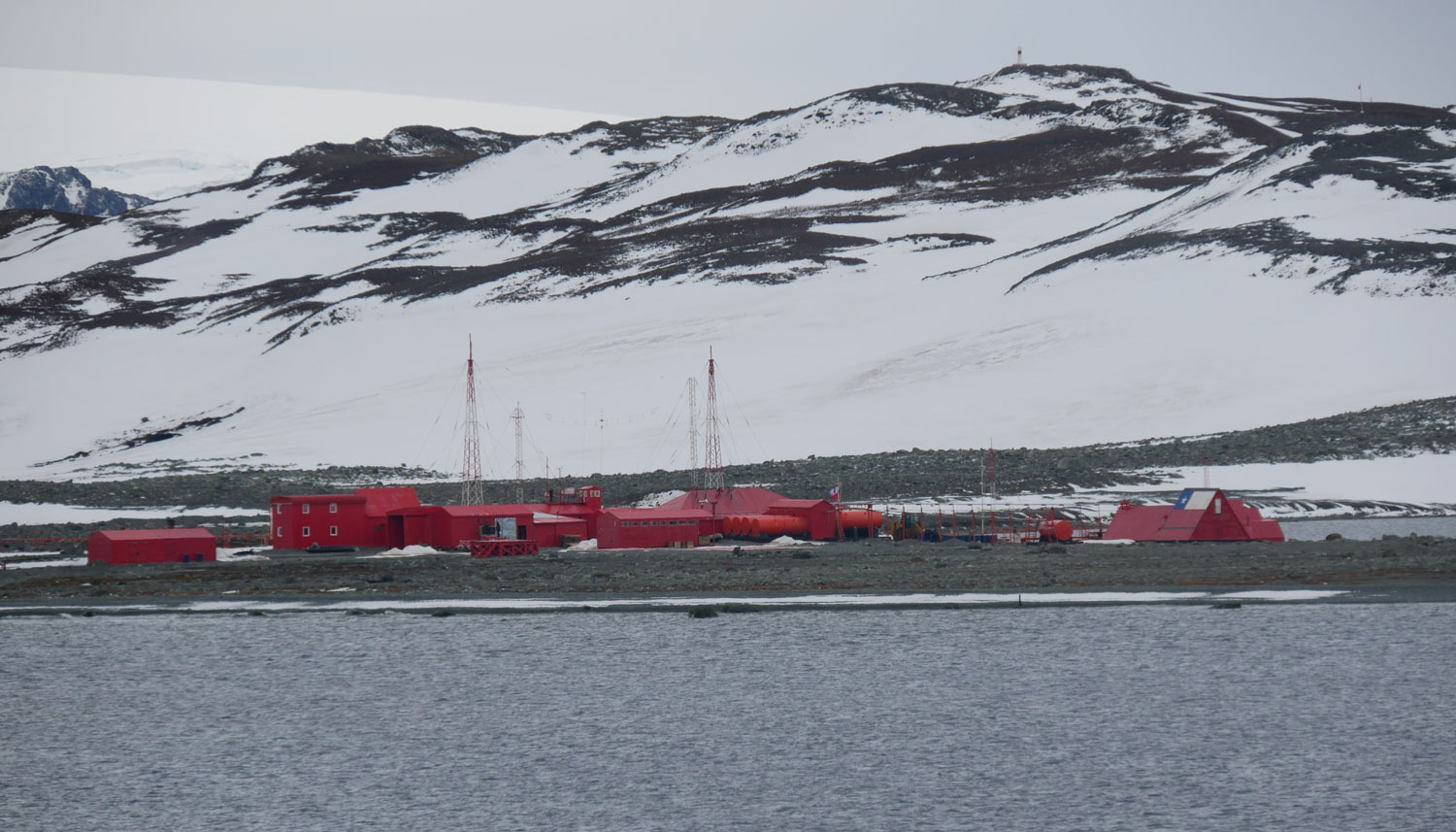
Some terrain pictures


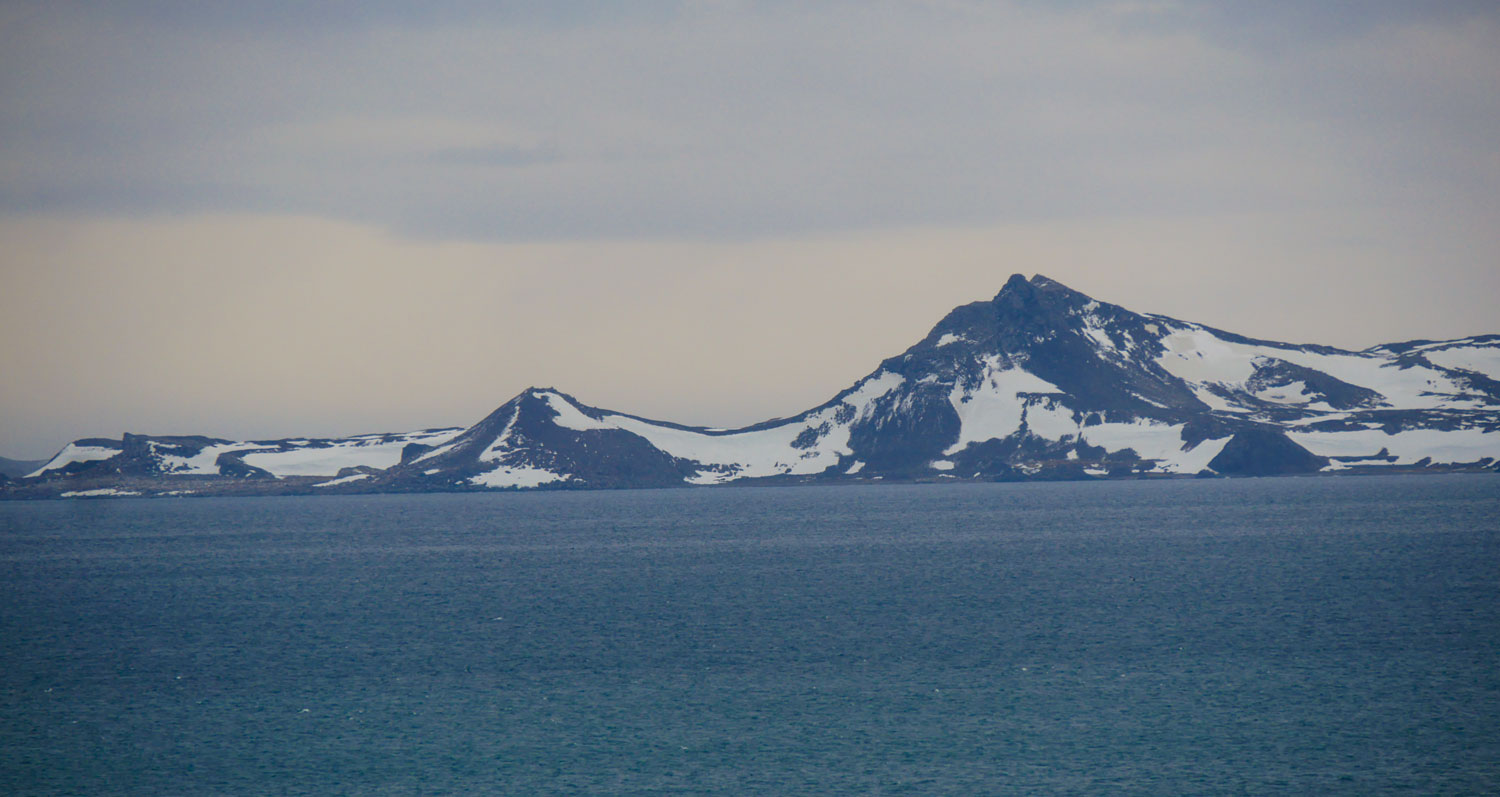
As I was returning to the cabin, I noticed this decoration by the pool. Preparations for New Year's Eve tomorrow.

